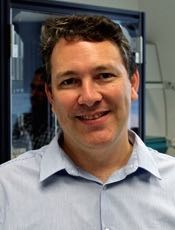Paul Dalton,
Professor, Functional Materials in Dentistry and Medicine,
University of Würzburg, Bavaria
Paul Dalton is a Professor in Biofabrication at the University of Würzburg, Germany. He has 20 years’ of interdisciplinary experience in biomedical materials, including polymer processing, surgery, nanotechnology and surface science. Originally from Perth, Australia, and trained as a materials scientist, he was part of a successful team in the 1990s taking an artificial cornea from concept to the clinic. Paul post-docced at the University of Toronto, Canada, and RWTH Aachen, Germany, working in neural tissue engineering and applying nanotechnology to life science applications. As an independent fellow at the University of Southampton, he invented melt electrospinning writing as a new 3D printing technology and performed experimental surgery to understand the neuro-inflammation of hydrogels in the spinal cord. Between 2010 and 2013, he split his time between Shanghai Jiao Tong University in China and Queensland University of Technology in Australia. Paul has published over 70 research articles in journals including Advanced Materials, Progress in Polymer Science and Nature Materials.
|

|
|

 Add to Calendar ▼SELECTBIOenquiries@selectbiosciences.com
Add to Calendar ▼SELECTBIOenquiries@selectbiosciences.com Add to Calendar ▼2015-02-09 00:00:002015-02-10 00:00:00Europe/LondonTissue Engineering and Bioprinting: Research to CommercializationTissue Engineering and Bioprinting: Research to Commercialization in Boston, USABoston, USASELECTBIOenquiries@selectbiosciences.com
Add to Calendar ▼2015-02-09 00:00:002015-02-10 00:00:00Europe/LondonTissue Engineering and Bioprinting: Research to CommercializationTissue Engineering and Bioprinting: Research to Commercialization in Boston, USABoston, USASELECTBIOenquiries@selectbiosciences.com